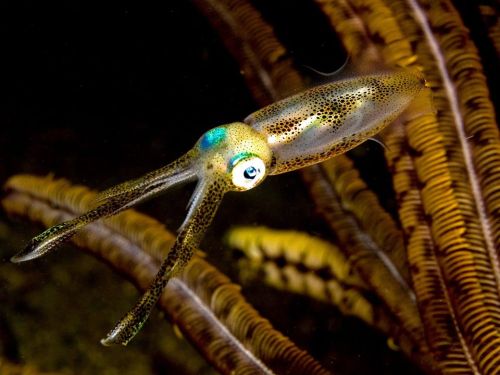Manatee


Manatee
More Posts from Llamaslikesciencetoo and Others
Date Idea: binge watch all the Free Willy movies

Canaries do not hate these spicy treats. In fact, they would be more than willing to eat jalapeno peppers. These are rich in vitamins A and C. / via

Inked!
Squid (and their relatives of class Cephalopoda) have long been known to release ink when threatened by a predator. The ink acts as a smokescreen - obscuring the senses of the predator allowing the squid valuable seconds to escape their notice. Until now, this was thought to be the ink’s only function. However, scientists have discovered that at least one tiny species of squid - the Japanese pygmy squid (Idiosepius paradoxus) - utilises ink for an entirely different reason - they use it to hunt.
Keep reading


Big sister drops to her knees to show affection to newborn Photo by James Irwin

Brain guardians remove dying neurons
By adolescence, your brain already contains most of the neurons that you’ll have for the rest of your life. But a few regions continue to grow new nerve cells—and require the services of cellular sentinels, specialized immune cells that keep the brain safe by getting rid of dead or dysfunctional cells.
Now, Salk scientists have uncovered the surprising extent to which both dying and dead neurons are cleared away, and have identified specific cellular switches that are key to this process. The work was detailed in Nature on April 6, 2016.
“We discovered that receptors on immune cells in the brain are vital for both healthy and injured states,” says Greg Lemke, senior author of the work, a Salk professor of molecular neurobiology and the holder of the Françoise Gilot-Salk Chair. “These receptors could be potential therapeutic targets for neurodegenerative conditions or inflammation-related disorders, such as Parkinson’s disease.”
Salk scientists show that two immune cell receptors, called Mer and Axl, are responsible for consuming dead or dysfunctional brain cells. An accumulation of dead cells (green spots) is seen in the subventricular zone (SVZ) – a neurogenic region – of the brain in a mouse lacking the receptors Mer and Axl. (Blue staining marks all cells.) No green spots are seen in the SVZ from a normal mouse. Credit: Salk Institute



This new procedure is making it a little bit easier to deal with cancer treatment
Cancer patients who are undergoing chemo no longer have to suffer hair loss. A new cooling treatment, called the Dignicap, is placed on the head during chemo and protects the hair follicle by reducing blood flow. The process can be expensive, sometimes up to $600, but so far it’s been very effective and has helped cancer patients feel a little more comfortable throughout their treatment.

The name “hippopotamus” comes from a Greek word meaning “water horse” or “river horse.” But hippos are not related to horses at all—in fact, their closest living relatives may be pigs or whales and dolphins! (photo: Peter Csanadi)


Palau vs. the Poachers
The isolated nation of Palau, in the South Pacific, comprises 250 small islands that take up only 177 square miles combined. But international law extends its authority to 200 miles from its coast, giving it control over 230,000 square miles of ocean. For a relatively poor country with no military and a tiny marine police division, and waters teeming with poachers, it’s a tall order. But, as The New York Times reporter Ian Urbina writes, Palau has mounted an aggressive response: it has banned bottom trawling and shark fishing, employed the latest in surveillance technology, and provided a model for collaboration among countries, companies and NGOs.
Reportage photographer visited Palau on assignment for The Times to show the marine police’s efforts and the natural resources they are trying to protect.
Read the article in this week’s issue of The New York Times Magazine.

x
-
 crushingjaws liked this · 6 years ago
crushingjaws liked this · 6 years ago -
 woahwaitaminute reblogged this · 6 years ago
woahwaitaminute reblogged this · 6 years ago -
 werewolf-girlfriend liked this · 6 years ago
werewolf-girlfriend liked this · 6 years ago -
 rikke-m-a reblogged this · 6 years ago
rikke-m-a reblogged this · 6 years ago -
 rikke-m-a liked this · 6 years ago
rikke-m-a liked this · 6 years ago -
 hapalopus reblogged this · 6 years ago
hapalopus reblogged this · 6 years ago -
 professorpoofy reblogged this · 6 years ago
professorpoofy reblogged this · 6 years ago -
 merciresolution reblogged this · 6 years ago
merciresolution reblogged this · 6 years ago -
 megmelodia liked this · 6 years ago
megmelodia liked this · 6 years ago -
 witch-of-avon liked this · 6 years ago
witch-of-avon liked this · 6 years ago -
 merciresolution liked this · 6 years ago
merciresolution liked this · 6 years ago -
 whaleaesthetics-blog reblogged this · 6 years ago
whaleaesthetics-blog reblogged this · 6 years ago -
 lashaist liked this · 6 years ago
lashaist liked this · 6 years ago -
 nosekissesbuttscritches-blog reblogged this · 6 years ago
nosekissesbuttscritches-blog reblogged this · 6 years ago -
 nosekissesbuttscritches-blog liked this · 6 years ago
nosekissesbuttscritches-blog liked this · 6 years ago -
 inthecompanyofwhales liked this · 6 years ago
inthecompanyofwhales liked this · 6 years ago -
 beetlejuicesgraveyardrevue liked this · 6 years ago
beetlejuicesgraveyardrevue liked this · 6 years ago -
 selkierosemary liked this · 6 years ago
selkierosemary liked this · 6 years ago -
 kittyleeyoung liked this · 7 years ago
kittyleeyoung liked this · 7 years ago -
 wolvesofwinterr liked this · 7 years ago
wolvesofwinterr liked this · 7 years ago -
 momo-no-aware liked this · 7 years ago
momo-no-aware liked this · 7 years ago -
 osteonaut reblogged this · 8 years ago
osteonaut reblogged this · 8 years ago -
 osteonaut liked this · 8 years ago
osteonaut liked this · 8 years ago -
 greebledgoblin reblogged this · 8 years ago
greebledgoblin reblogged this · 8 years ago -
 petraplatypuspan liked this · 8 years ago
petraplatypuspan liked this · 8 years ago -
 thoticcusmaximus liked this · 8 years ago
thoticcusmaximus liked this · 8 years ago -
 letscuttle liked this · 9 years ago
letscuttle liked this · 9 years ago -
 megko liked this · 9 years ago
megko liked this · 9 years ago -
 notmindingthebuzzcocks reblogged this · 9 years ago
notmindingthebuzzcocks reblogged this · 9 years ago -
 sunshiny-bluebird reblogged this · 9 years ago
sunshiny-bluebird reblogged this · 9 years ago -
 sphynxcatbat-blog reblogged this · 9 years ago
sphynxcatbat-blog reblogged this · 9 years ago -
 fernsfolly liked this · 9 years ago
fernsfolly liked this · 9 years ago
Mainly interested in ecology, but also the entirety of science.
179 posts